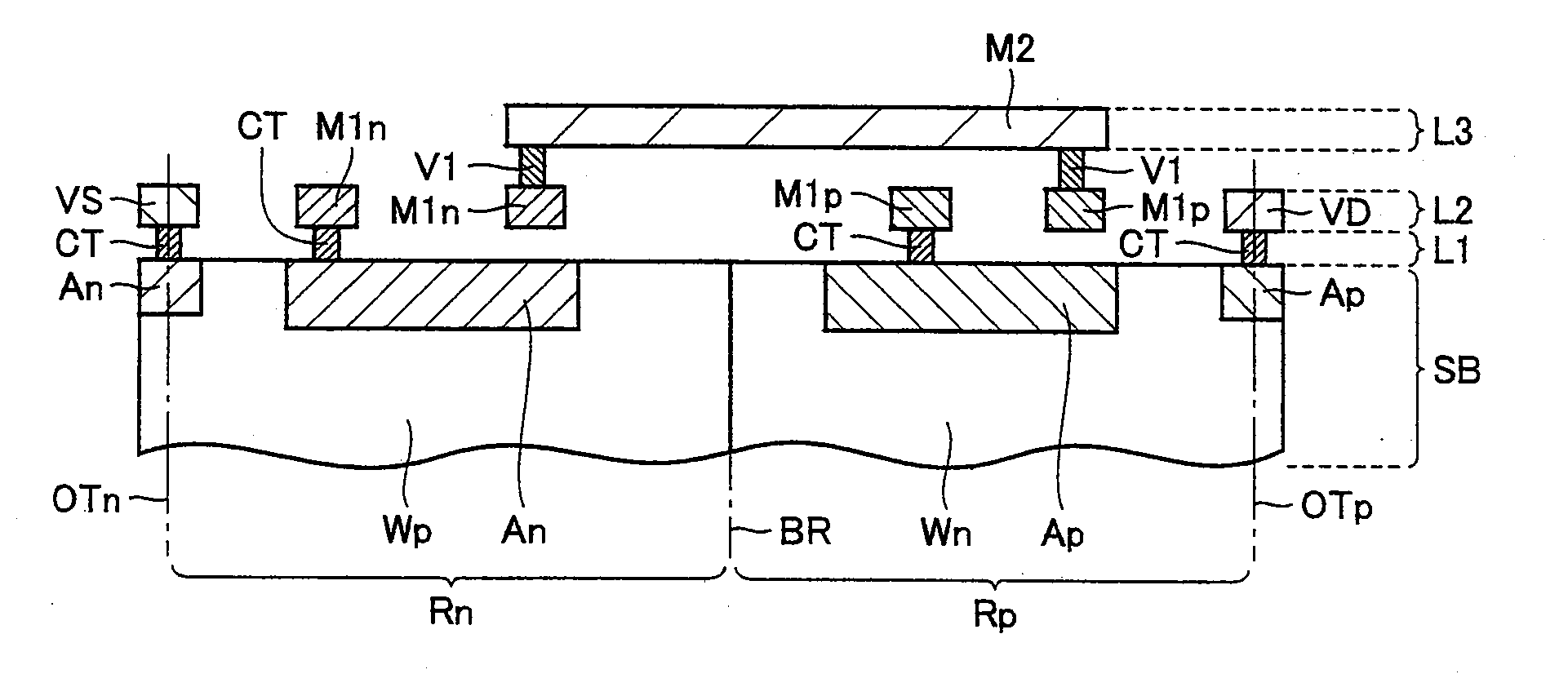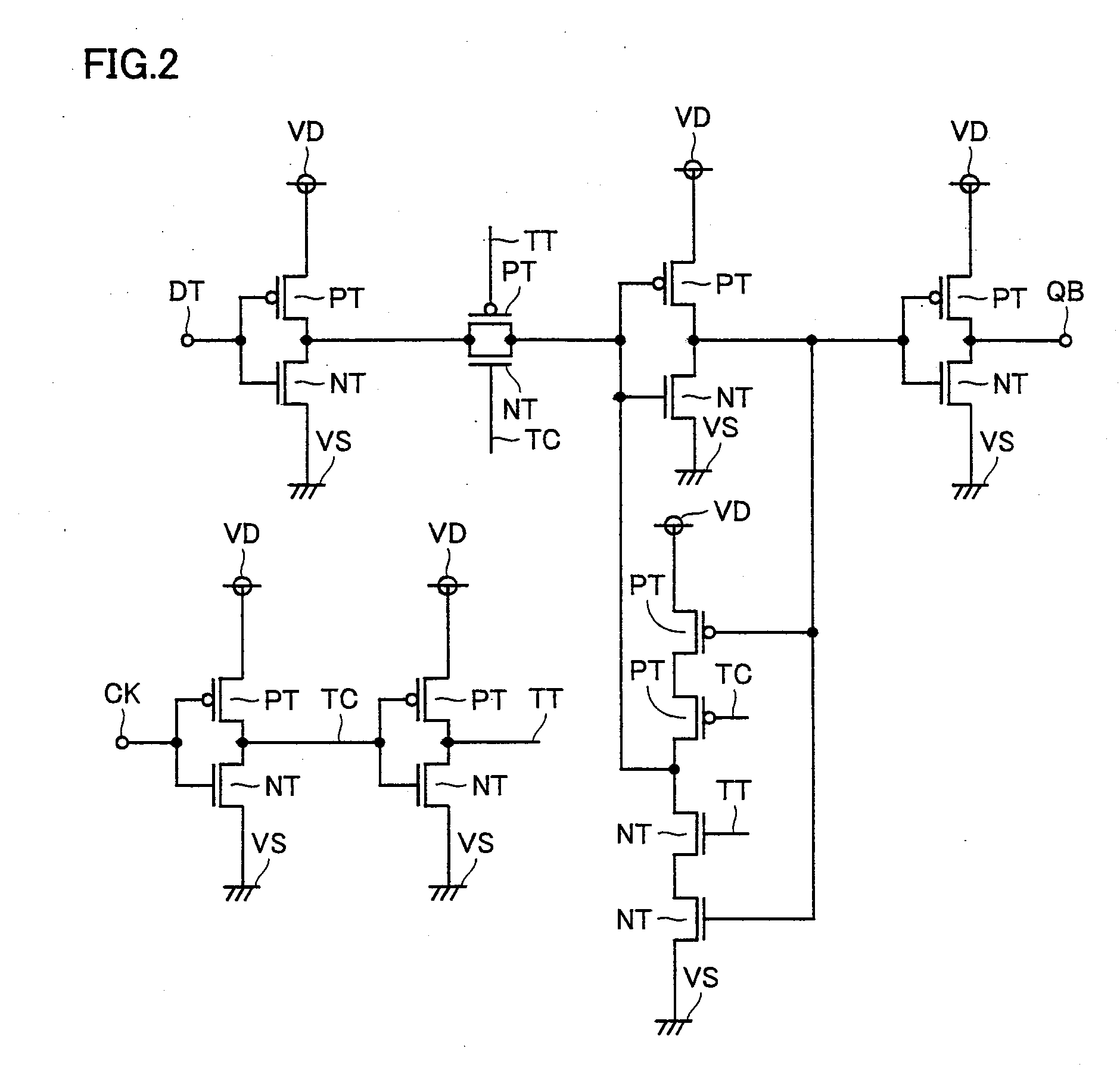Semiconductor device
a semiconductor and device technology, applied in semiconductor devices, semiconductor/solid-state device details, electrical devices, etc., can solve the problems of increasing insufficient resolution, and increasing so as to reduce the size and cost of semiconductor devices, and reduce the variation of lithography and complicated designs.
- Summary
- Abstract
- Description
- Claims
- Application Information
AI Technical Summary
Benefits of technology
Problems solved by technology
Method used
Image
Examples
first embodiment
[0070]With reference to FIG. 1, a semiconductor device (e.g., a semiconductor chip) 50 has a surface mainly having a standard cell region 51, an input / output (I / O) cell region 52 surrounding standard cell region 51, and a pad (not shown) used for inputting / outputting externally.
[0071]In the figure, standard cell region 51 has a plurality of standard cells 51 as arranged in a matrix (or rows and columns) extending in a direction X and a direction Y orthogonal to direction X. The plurality of standard cells 51as are each surrounded by peripheral edges extending in direction X and opposite to each other, and peripheral edges extending in direction Y and opposite to each other. A standard cell is a cell for a logic element. It is arranged by automatic placement to configure a desired function in a semiconductor device. For an SOC using a standard cell library, standard cell region 51 has formed therein a central processing unit (CPU), a random access memory (RAM), a first-in first-out (...
second embodiment
[0096]With reference to FIG. 9, while the first embodiment provides power supply wiring VD and grounding wiring VS, the present embodiment instead provides a power supply wiring VDw and a grounding wiring VSw. Power supply wiring VDw and grounding wiring VS each have a width Ww. Width Ww is larger than a width Ws of each of pMIS wiring M1p and nMIS wiring M1n.
[0097]The remainder in configuration is substantially identical to that described above in the first embodiment. Accordingly, identical or corresponding elements are identically denoted and will not be described repeatedly.
[0098]In accordance with the present embodiment, power supply wiring VDw and grounding wiring VSw each increased in width Ww can have a reduced voltage drop while pMIS wiring M1p and nMIS wiring M1n, which significantly affect the size of standard cell Cff, can be reduced in width Ws. This can reduce power supply voltage drop, which is disadvantageous for a fast operation in particular, and also reduce stand...
third embodiment
[0099]With reference to FIG. 10, the present embodiment provides a semiconductor device having standard cells Civ, Cnd, Cnr, and Cfl. Standard cells Civ, Cnd, Cnr, Cfl are divided into a plurality of rows and thus arranged, and are arranged in each row in direction X as shown in the figure.
[0100]Standard cells Civ, Cnd, and Cnr are provided to implement the functions of an inverter, a 2NAND, and a 2NOR, respectively. The 2NAND is an NAND having two input systems, and the 2NOR is an NOR having two input systems. Furthermore, standard cell Cfl is a filler cell.
[0101]With reference to FIGS. 11-14, the present embodiment provides a semiconductor device having standard cells Civ, Cnd, Cnr each similar in configuration to standard cell Cff of the first embodiment. More specifically, the present embodiment provides a semiconductor device having standard cells Civ, Cnd, Cnr each having a semiconductor substrate and first to third layers. The semiconductor substrate has pMIS region Rp and nM...
PUM
 Login to View More
Login to View More Abstract
Description
Claims
Application Information
 Login to View More
Login to View More - R&D
- Intellectual Property
- Life Sciences
- Materials
- Tech Scout
- Unparalleled Data Quality
- Higher Quality Content
- 60% Fewer Hallucinations
Browse by: Latest US Patents, China's latest patents, Technical Efficacy Thesaurus, Application Domain, Technology Topic, Popular Technical Reports.
© 2025 PatSnap. All rights reserved.Legal|Privacy policy|Modern Slavery Act Transparency Statement|Sitemap|About US| Contact US: help@patsnap.com



